Caregivers should wash their hands both before and after providing oral care to the elderly and put on disposable gloves during oral care procedures.
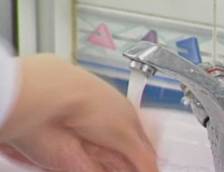
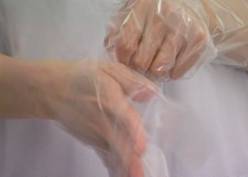
To protect the clothing of the elderly from getting wet, cover the body with a towel or a plastic sheet. When providing oral care to the elderly who are being bed rest, if possible, let the elderly to sit upright with pillows behind his/her back for support, and if necessary use a suction to remove saliva to prevent aspiration.
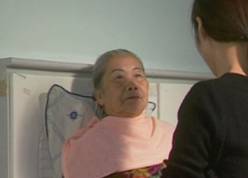
Caregivers should help the frail elderly with natural teeth to brush their teeth in the morning and at night, by using less amount of toothpaste.
Materials:
| Toothbrushing | Toothbrush, fluoride toothpaste, a glass, water, a small basin, towel or plastic sheet, disposable gloves, glycerine and cotton buds (for the elderly with dry or cracked lip) |
| Clean interdental surfaces | Floss holder, interdental brush, single-tuft toothbrush |
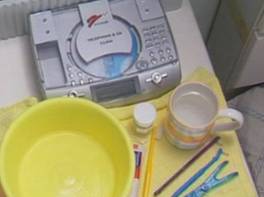
Procedures:
Sit in front of the elderly, and remove his/her denture(s). Then check his/her oral cavity to see if there are any wounds or abnormalities present. Clear the food debris inside the oral cavity. Use your hand to hold the elderly's chin to support his/her head. To prevent aspiration, do not force the toothbrush into his/her mouth. Perform toothbrushing for the elderly using the regular brushing method same as for everyone else.
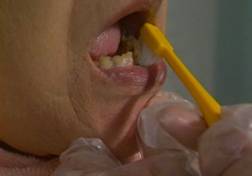
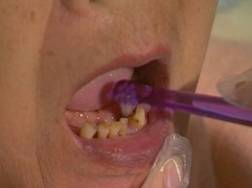
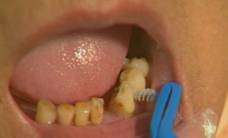
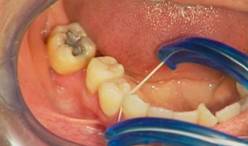
Caregiver should swab the mouth for the frail elderly every night.
Materials:
Tweezers, gauze, a glass and water
Procedures:
Use tweezers to hold a piece of gauze
Soak the gauze with water and squeeze out excess water.
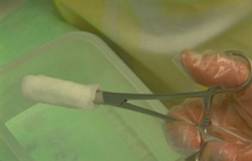
Swab the cheek first, and then swab the other parts of the oral cavity in sequence of gum of upper arch, gum of lower arch, palate, top surface of the tongue, beneath the tongue and lip. Each area should be cleaned twice with clean gauze each time.
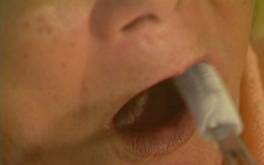
Take care of this kind of elderly, caregivers should not use toothpaste. It is enough for the caregiver to apply the basic tooth brushing method and use floss holder, interdental brush or single-tuft toothbrush to clean interdental surfaces of the teeth. Besides, as the elderly cannot rinse, caregiver should swab the teeth and other areas in the mouth after toothbrushing. If the elderly you care for has no natural teeth, swab the oral cavity with wet clean gauze is enough.
At night, caregiver should clean the denture(s) for the elderly. When remove it from the mouth of elderly, to prevent the clasps or other parts of the denture from traumatizing the soft tissue of oral cavity, caregivers should gently retract the cheeks of the elderly to enlarge the space and take out the denture by rotating it. Use toothbrush and detergent to clean every part of the denture, then rinse the denture and soak it in a glass of water overnight. Put back the denture in the elderly's mouth in the next morning.
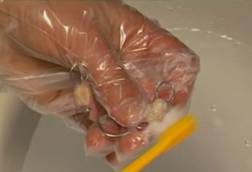
If the elderly have deep wrinkles formed in the mouth corners, the wrinkles will be extended from the mouth corner to the chin. As these folds trap and hold saliva, the caregivers should clean these folds for the elderly with wet towel or wet cotton buds to prevent inflammation.
Clean all the oral hygiene equipments thoroughly after using.